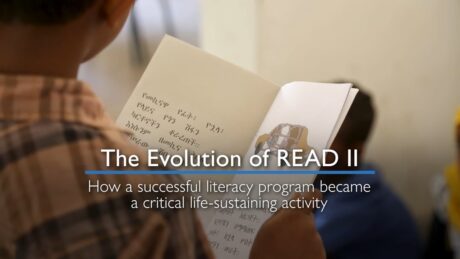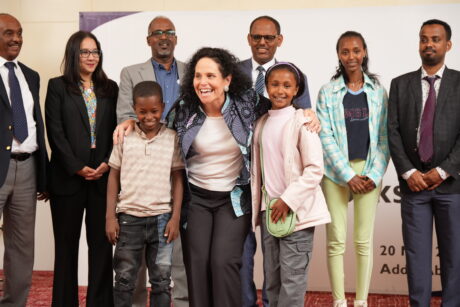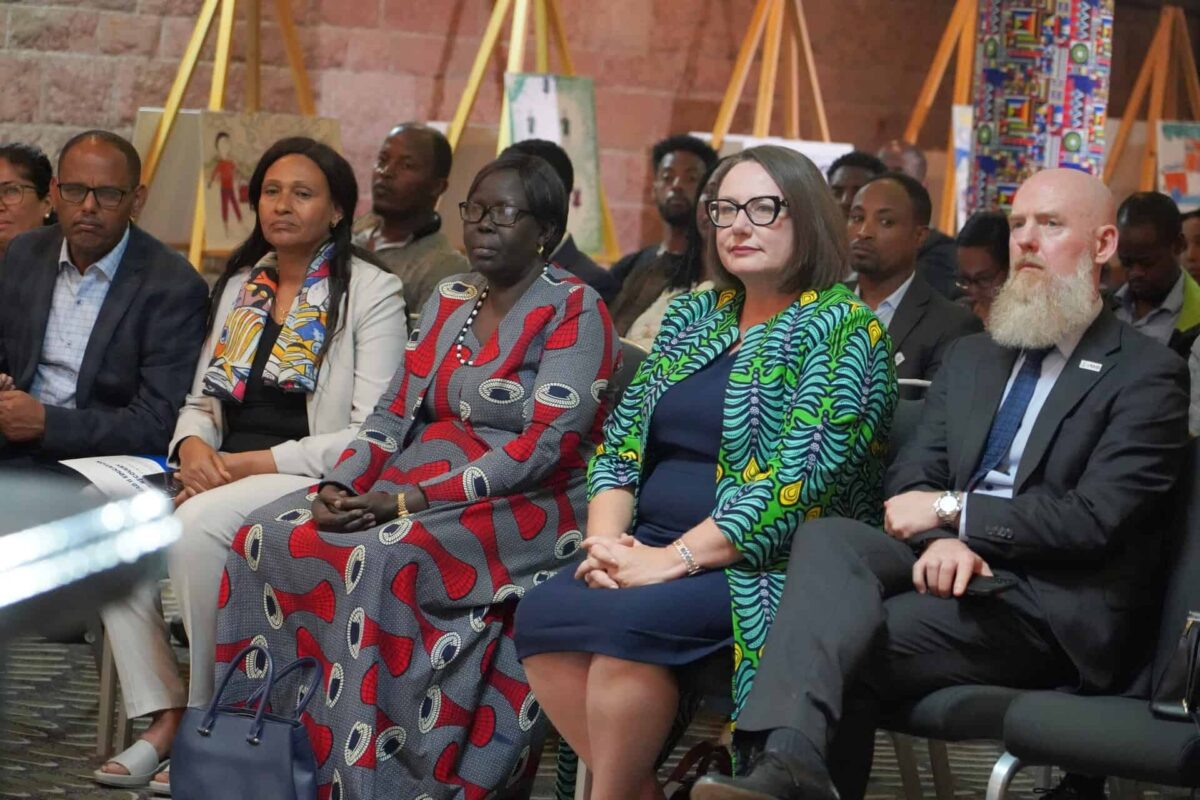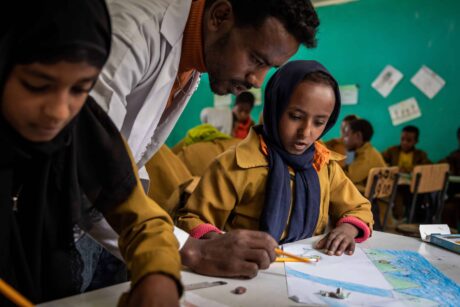When designing and implementing solutions for sustained growth, development programs depend on a strong foundation that brings together clear plans, stakeholder engagement, policy frameworks and many other strategies. Regardless of the duration, size and scope of a program, it should be geared towards sowing the seeds for sustained growth, allowing others that follow it to build on its accomplishments.
At the center of this foundation are the communities the program seeks to serve. Approaching programming with a community-anchored abordagem is a crucial piece in ensuring a program’s success.
Only by collaborating with communities can development professionals uncover facts, disprove assumptions and validate a theory of change.
No one is better placed to characterize the local situations, pinpoint problems, single out priorities, and identify local solutions to local problems in an effective way than the community itself. Communities know what works for them, how interventions can advance their own strategic interests and how to work efficiently in the local context. Community-driven development projects usually deliver public investments to poor people faster, cheaper and better. Building trust matters if this partnership is going to work.
These conversations will pave the way for a stronger partnership that responds to the real (not assumed) needs and aspirations of local communities.
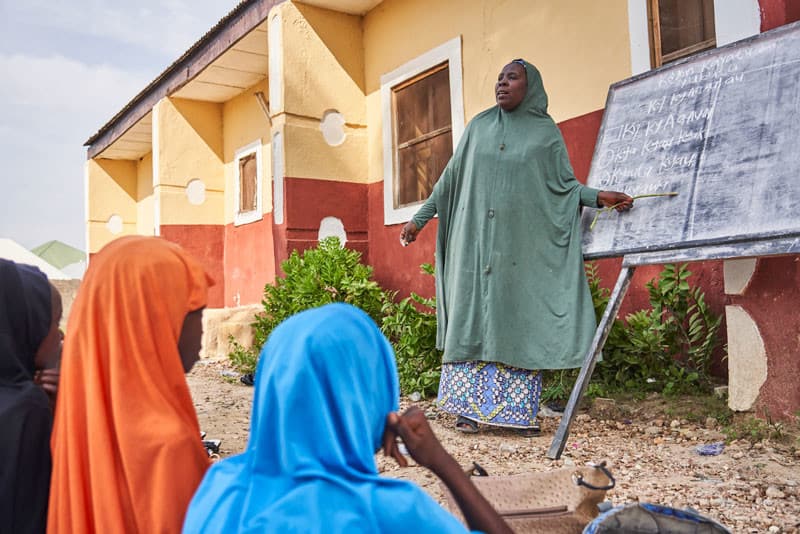
Na Nigéria, the USAID-funded Northern Education Initiative Plus (NÃO Mais) has engaged communities to expand education opportunities for tens of thousands of students. The project aims to strengthen the capacity of governments in two states to provide greater access to basic education — especially for girls and out-of-school children — and to significantly improve reading outcomes for school-aged children and adolescents. One piece of its holistic approach is the establishment of centros de aprendizagem não formal that serve students not enrolled in the formal school system.
Non-formal education has long been instrumental in addressing the educational and psycho-social needs of out-of-school children and adolescent girls. For NEI Plus, what stands out is the extent to which the project has put the communities at the center.
This community-based effort starts with a thorough mapping exercise in collaboration with community structures (both traditional and contemporary), local government entities, and local civil society organizations to get to know where the need is most felt. Once a community has been identified to host a non-formal learning center, the project consults with community members and leaders to:
- Identify who should be enrolled in this center with an emphasis on girls’ enrollment
- Determine the location of the center giving due consideration to safety issues
- Determine o tipo de infraestrutura (estrutura temporária, sala de aula, barraca, complexo de instituição religiosa, etc.)
- Identificar quem deve atuar como professor ou facilitador de aprendizagem e definir critérios para sua seleção
- Selecione os membros do Comitê de Gestão baseado no Centro (CBMC)
- Especifique quais dias da semana e horários (por exemplo, levando em consideração os dias de mercado, épocas de colheita ou ocasiões religiosas) são adequados para crianças frequentarem
- Identificar artesãos locais que poderiam treinar estudantes em habilidades de trabalho exigidas em sua localidade
- Determine as contribuições da comunidade para o centro, que inclui apoio e monitoramento em espécie e monetário
Este processo garante que os centros estejam prontos para operar com sucesso e gera um sentimento de propriedade e responsabilidade entre a comunidade. NEI Plus estabeleceu 5,600 non-formal learning centers across Bauchi and Sokoto states with a student population of around 270,000.
Facilitating these important conversations are Community Coalitions, which are instrumental in bringing together diverse interest groups such as community and faith-based organizations, traditional and religious leaders, prominent personalities in the localities, and representatives of women and youth groups. NEI Plus established 20 Community Coalitions to drive engagement and create a platform for leaders to advocate and provide for the needs of out-of-school children and adolescent girls.
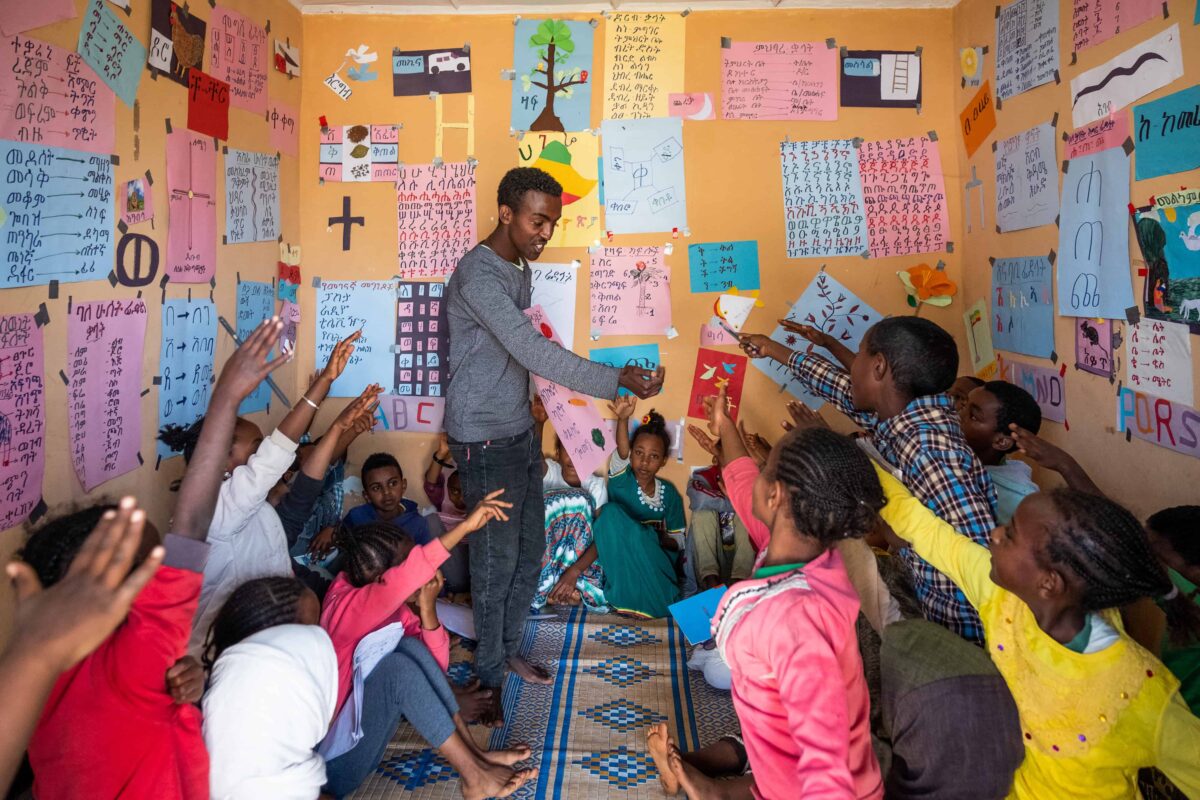
Community partnership and leadership is also expanding access to educational opportunities in Ethiopia. O USAID-funded READ II program aims to improve the reading proficiency of 15 million children by boosting the quality of literacy instruction and student support. Lá, communities are similarly mobilized around local reading camps, which are led by youth volunteers. LEIA II, in collaboration with seven local NGOs, has mobilized 11,656 juventude voluntários, called Community Literacy Leaders, and established 5,938 reading camps across the country. Clique aqui to take a 360-degree tour of a reading camp.
An outreach campaign mobilized communities to promote a culture of reading. In addition to identifying youth volunteers, local communities have succeeded in providing space, making in-kind contributions, and maintaining the camps. Os acampamentos tornaram-se espaços divertidos e envolventes para as crianças praticarem a leitura fora da escola com o apoio de facilitadores.
Fora da educação, o desenvolvimento ancorado na comunidade pode fortalecer o crescimento económico e expandir as oportunidades. O acesso a instituições financeiras é um grande obstáculo para muitas comunidades e indivíduos, e para as mulheres em particular. O Comitê de Avanço Rural de Bangladesh (BRAC) lidera intervenções de base que promovem o envolvimento e a apropriação da comunidade no fortalecimento das oportunidades económicas e do envolvimento das mulheres. BRAC adota uma abordagem empresarial para acabar com a pobreza, usando modelos de empresa social para recuperar custos e acelerar o impacto em escala.
Através deste modelo, pessoas excluídas do sistema bancário formal (devido à falta de ativos que normalmente tornam as pessoas elegíveis para empréstimos) can access a myriad of financial services such as credit, savings and microinsurance products with the support of microfinance. This practice creates a suitable environment for families to build assets and reduce vulnerability to shocks such as health emergencies or natural disasters amongst others. Collateral-free loans are released exclusively to individual women through a group setting, known to BRAC as village organizations.
This platform, comprising 15 para 25 mulheres, helps them come together to deposit their installments and savings, share information and improve financial awareness through training and market support. Using this mechanism, BRAC has succeeded in impacting the lives of 5.6 million active borrowers (87 percent of whom are women) by disbursing $4 bilhão em 2018. For these women, this has been a life-changing opportunity.
De uma perspectiva de desenvolvimento muito mais ampla, começar com uma âncora na comunidade é vital para avançar na jornada rumo à autossuficiência. Quando os objectivos de desenvolvimento — na educação, crescimento económico, saúde, e muito mais - estão tão interligados, fortes raízes comunitárias garantem que os programas possam complementar-se e satisfazer as necessidades reais e presentes das pessoas que servem.
Sem ouvir os pobres, não podemos aliviar a pobreza; sem ouvir os incultos, não podemos expandir a educação. Para que os projetos sejam eficazes e sustentáveis, as comunidades devem ser trazidas para o centro. Não é uma opção, mas uma exigência.
Semere Salomão é Diretor Sênior do Africa Center da Creative Associates International.
